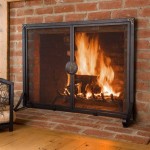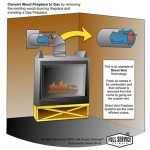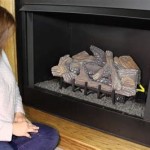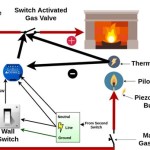Fireplace Burner Pan: A Guide to Understanding and Choosing the Right One
A fireplace burner pan serves as the foundation of your gas fireplace, playing a critical role in the efficient and safe operation of your heating system. It houses the burner assembly, provides a platform for the gas to be ignited, and distributes heat evenly throughout the firebox. While often overlooked, selecting the correct burner pan is crucial for optimal performance and longevity of your fireplace. This article provides a comprehensive guide to understanding the nuances of fireplace burner pans, helping you make informed decisions regarding their selection and maintenance.
Types of Fireplace Burner Pans
Fireplace burner pans are available in a variety of materials and designs, each with its own unique characteristics. Some commonly encountered types include:
- Cast Iron Burner Pans: Known for their durability and heat retention, cast iron pans are a popular choice for homeowners seeking a traditional fireplace experience. They offer a robust construction that can withstand high temperatures and prolonged use, ensuring a consistent flame and efficient heat distribution. However, cast iron can be prone to rust if not properly maintained.
- Steel Burner Pans: Steel burner pans are lighter and more affordable than their cast iron counterparts. They are also generally more resistant to rust and corrosion, making them suitable for humid environments. While steel may not provide the same level of heat retention as cast iron, it still offers efficient performance and a solid flame.
- Ceramic Burner Pans: Ceramic burner pans are becoming increasingly popular due to their ability to mimic the look and feel of a real wood fire. They often feature realistic logs and embers, enhancing the aesthetic appeal of your fireplace. However, ceramic pans are less durable than cast iron or steel and may require more care to prevent damage.
The specific type of burner pan you choose will depend on your individual preferences and needs. Consider factors such as your budget, desired aesthetic, and the frequency of fireplace use when making your decision.
Key Features to Consider
Beyond the material, there are several key features to consider when choosing a fireplace burner pan:
1. Size and Shape
The size and shape of the burner pan are critical for proper airflow and heat distribution. The pan should fit snugly within your fireplace's firebox, leaving minimal gaps. A poorly fitted pan can lead to inefficient burning and potentially unsafe conditions. It's essential to measure the firebox dimensions accurately before purchasing a new burner pan.
2. Burner Assembly
The burner assembly is the mechanism that ignites the gas and controls the flame. Consider the type of burner assembly included with the pan, as different designs offer varying levels of efficiency and flame patterns. Some common burner types include:
- Single Burner: A single burner provides a concentrated flame in the center of the pan, suitable for smaller fireplaces.
- Multiple Burners: Multiple burners create a more dispersed flame pattern, ideal for larger fireplaces.
- Variable Flame Control: This feature allows you to adjust the flame height and intensity, offering greater flexibility in managing heat output.
Ensure the burner assembly is compatible with your existing gas line and fireplace controls.
3. Heat Output
The heat output of a burner pan is measured in British thermal units (BTUs). This value determines how much heat the fireplace can generate. Consider the size of your room and your desired level of warmth when selecting a burner pan with the appropriate BTU rating. A pan with too low a BTU rating may not provide enough heat, while a pan with too high a BTU rating could be unnecessarily expensive to operate and potentially unsafe.
4. Safety Features
Safety is paramount when using any gas appliance. Look for burner pans with safety features such as:
- Flame Sensor: This sensor detects the presence of a flame and automatically shuts off the gas supply if the flame is extinguished, preventing potential hazards.
- Thermal Shut-Off: This feature prevents overheating by automatically shutting off the gas supply if the burner pan reaches a predetermined temperature.
- Anti-Tip Device: This device secures the burner pan to the fireplace, preventing accidental tipping and potential gas leaks.
Always consult the manufacturer's instructions and local building codes for specific safety guidelines.
Maintenance and Care
Regular maintenance is crucial for ensuring the longevity and safety of your fireplace burner pan. Follow these guidelines:
- Clean the burner pan regularly: Remove any debris or buildup that accumulates on the pan, using a soft brush or vacuum cleaner.
- Inspect the burner assembly: Check for any signs of damage, wear, or corrosion. Replace any worn or damaged parts immediately.
- Clean the vent: Ensure the vent is free of obstructions to allow proper air circulation.
- Lubricate moving parts: Apply a light coating of lubricant to moving parts, such as the burner valve, to prevent rust and ensure smooth operation.
- Consult a professional: For any major repairs or installations, contact a qualified fireplace technician.
Proper maintenance will extend the life of your burner pan and ensure optimal performance and safety.

Fluted Rectangle Stainless Steel Pan Burners Diamond Fire Glass

Stainless Steel Gas Fireplace Burner Pan Magic Touch Mechanical

Fireplace Pan Burner Cs30 Sr Rasmussen Gas

Pan Burners Diamond Fire Glass

Trapezoid Gas Fireplace Burner Pan Magic Touch Mechanical

Rasmussen Cs Custom Pan Vented Fireplace Burner Kit With Round Legs

Burner Styles Rasmussen Gas Logs

Rasmussen Custom Pan Vented Fireplace Burner Kit With Strap Legs Natural Gas 18 X 12 Com

Stainless Steel Gas Fireplace Burner Pan Magic Touch Mechanical

American Fireglass Paramount Fireplace Pan Stainless Steel
Related Posts








